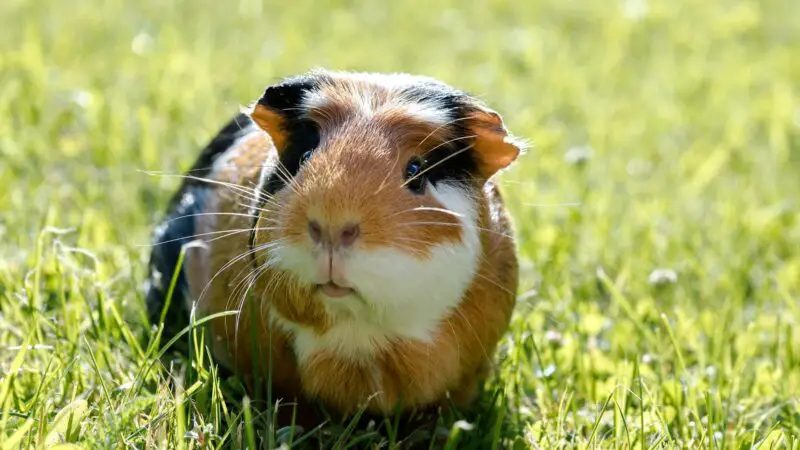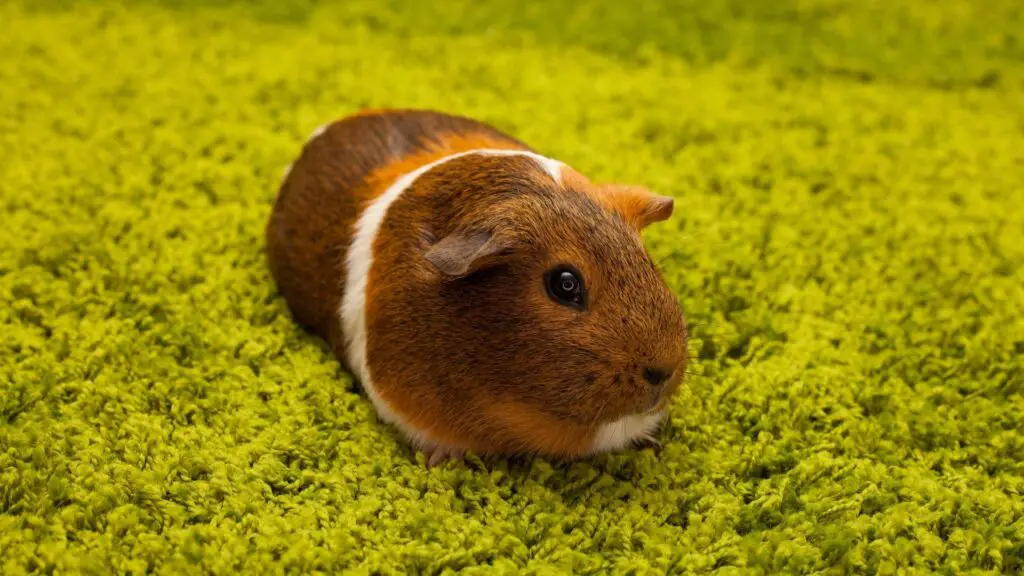Despite their thick fur, guinea pigs are prone to a variety of skin problems. Many factors can contribute to skin problems, including poor nutrition, poor hygiene, poor living conditions, and the presence of other animals.
Bumble foot, urine scald, cysts, parasites, fungal infections, slobbers, and greasy seborrhea are some of the most common skin problems in guinea pigs. To avoid these skin issues, focus on their hygiene and nutrition.
Table of Content
7 Common Skin Problems In Guinea Pigs | Causes and Treatment

1. Bumble Foot
Bumblefoot is one of the most common problems with guinea pig’s skin. The best way to describe this problem is to associate it with the blisters on your foot. You’ve probably experienced this as a result of bad or uncomfortable shoes.
These blisters can get bigger and bigger until they snap and release the fluid inside the blister. Those who walk often know that blisters can be very painful and sometimes debilitating. Now, let’s try to imagine how painful this can be for such a tiny animal as a guinea pig.
Basically, bumblefoot is a condition in which guinea pig’s footpad is inflamed. This inflammation can also lead to overgrowth, making the feet significantly bigger. Thus, reducing its walking ability. As this is treated as an infection, if left untreated, it can lead to amputation.
The causes for bumblefoot can be different, yet these are the main causes – the lack of vitamin C and wire floor caging. Wire floor caging is known to increase the pressure on the feet. If you notice your guinea pig walking strangely or you see something on the skin of the foot, visit the vet immediately.
2. Urine Scald
Urine scald is a skin problem that can be caused by some internal problems. As its name implies, the problem has to do with the urine and this issue can be seen between the back legs, in genitals.
Urine scald is usually associated with medical conditions, such as urinary tract or bladder stones. These stones can scratch the urinary tract when the guinea pig pees, making the skin around the genitals red and inflamed.
Depending on the size of the stones, your guinea pig’s bladder can be so irritated that it may completely block the urethra, thus preventing your guinea pig from peeing. The common symptom of this skin problem is when your guinea pig refuses to eat.
Guinea pigs are very greedy when it comes to food. But, if you give it some food and it doesn’t look enthusiastic, be sure to check the area between the back legs. If you see redness and inflammation, you should immediately call your vet.
To prevent this from happening, the first thing to do is to buy clean water for your guinea pig or either boil water to decrease the number of stones in it. Finally, you should always keep your guinea pig’s cage clean. If you see traces of urine or poop, immediately wipe the cage.
3. Cysts
Basically, cysts are pockets of pus which cause swelling, inflammation, and pain. The most common place where they appear is on the jawline, back, and rump but they can also appear anywhere on the body, not necessarily on the aforementioned places.
Cysts usually has three most common causes – bacterial infection, hay poke, and fight. Hay poke will not always result in a cyst if you keep your hay clean.
When the cyst appears, don’t try to poke it like you probably poke your pimples. Sometimes, these pimples or cysts are tumors or fatty lumps. They require a doctor or a vet, in guinea pig’s case, to be properly analyzed. When the vet determines what is the cause and the type of the cyst, he will proceed to drain it or remove it surgically.
4. Parasites
Parasites are something that all animals have. It is usually located underneath the skin. If it’s a small amount, the guinea pig will be healthy. But, if the guinea pig lives in poor conditions, these parasites can cause skin problems. It makes the guinea pig try to scratch it and even make the wound much worse, causing bleeding. The main cause of this is low immunity or stress.
To remedy the situation before it even happens, you should give your guinea pigs quality food and vitamins, especially vitamins C and D. Your guinea pig should be kept sanitary as these parasites can infect other pets if you have them.
5. Fungal Infections
Fungal infections are often confused with mite infections. However, there is a difference, as fungal infections usually affect the top layer of skin and guinea pig’s hair.
Luckily, these infections can be easily identified. The most common symptoms include dandruff-like skin on the coat, as well as scaly skin on feet, nose, and ears. The skin is, in this case, dry and looks and feels unhealthy.
This can be caused by high humidity, stress, and with age, as guinea pig gets older. However, fungal infections aren’t very dangerous if treated right. In most cases, you can get away with coconut oil, which you can smear on the places where the infection began to spread.
6. Slobbers
If you see your guinea pig drooling, that’s not because it’s hungry. In that case, you should think about slobbers. Sometimes, the fur under the jaw and on the neck remains wet from salivation. In this case, dermatitis is caused, also called slobbers.
Guinea pigs under 3 years usually don’t suffer from this condition but older guinea pigs do. This is because their upper and lower premolar teeth meet improperly while eating.
However, it’s not only the saliva that causes this condition. In many cases, it can be a diet that’s bad for your guinea pig and causes various skin problems.
To prevent this from happening, be sure to contact your vet and come up with a balanced and nutritious diet plan. Furthermore, you can add some vitamins and minerals to balance the diet even more. You can also wipe your pig’s mouth when it finishes eating. This way, you’ll prevent the saliva from sliding down the mouth.
7. Greasy Seborrhea
Greasy seborrhea is usually a problem that occurs in male guinea pigs but female pigs are prone to it too. This condition occurs in the area around tail and as its name implies, it’s a product of the grease gland.
The main function of the grease gland is to produce secretions for marking and scenting purposes. Both males and females have these glands. But in many cases, it’s the male guinea pig that suffers from this.
The cause of this condition is the excessive secretion from gland which causes greasy, matted, and sometimes, smelly fur. If not detected soon, it may also cause secondary infections, which can make the treatment more complicated than it should be. If it’s detected on time, the treatment is fairly simple and includes medicated baths and topical applications.
How to Prevent Skin Diseases in Guinea Pigs?

The main culprit of these problems is the lack of hygiene. Whether it’s the hygiene of the guinea pig or its cage, it simply needs to be kept at high levels.
The other reasons include poor nutrition and lack of minerals and vitamins, as well as keeping other pets with guinea pigs. If your guinea pig lacks vitamins, be sure to contact your vet and talk to him about balancing your pig’s nutrition and adding vitamin and mineral supplements.
Summary
Now that you know about the most common skin problems in guinea pigs, you shouldn’t have a problem owning one. Guinea pigs are much cheaper to take care of than dogs or cats and that’s something that makes everything easier. Don’t buy a guinea pig if you don’t want to take care of it properly.
List of Sources
How to Care for Your Guinea Pig
